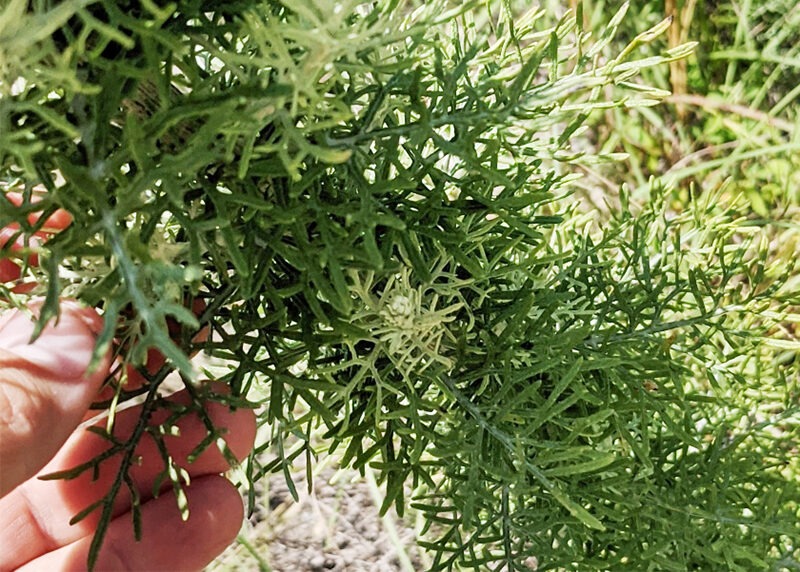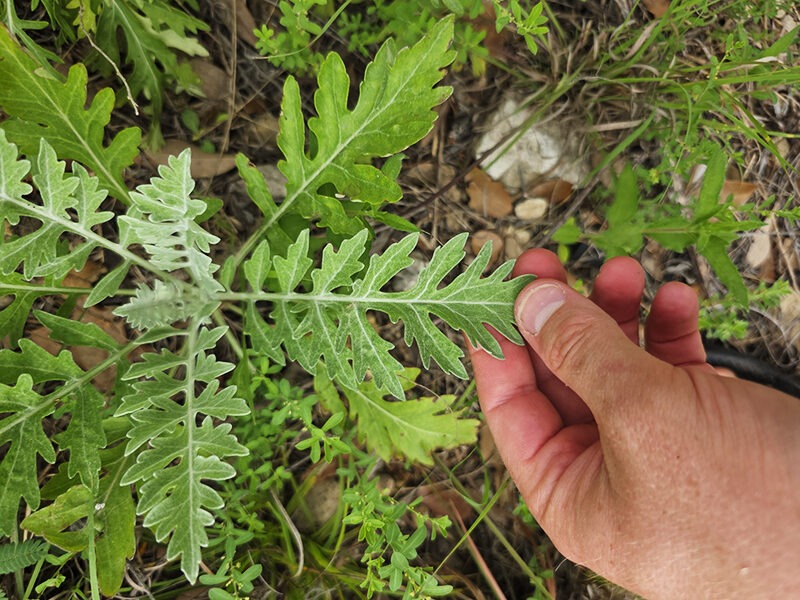These weeds aren’t likely to win any wildflower beauty pageants, but they do add whimsy to the natural world around San Antonio.
Continuing with our tales of two plants, we have arrived at some rather strange-looking wildflowers: the woollywhites.
The Carolina woollywhite (Hymenopappus scabiocaeus) is commonly found in the clay soils of the Hill Country, while its sandy-soil cousin, sandhill woollywhite (Hymenopappus carriazoanus), is endemic to Texas, meaning it only grows in a narrow band of a particular soil that runs from Frio County, northeast through Bastrop to Anderson County.
Both are known as woollywhites due to the thick covering of appressed white hairs that cover their stems and leaves, giving the whole plant a silvery-green color. They both have cream-colored compound flowers that mostly lack the ray florets of other plants in the aster family, and bloom in the spring. These woollywhites are biennials, a mix between annual and perennial, they grow for their first year as just leaves, then in their second spring they flower and die.

To tell these relatives apart look to the leaves, specifically those that grow lowest, known as basal leaves.
The basal leaves of sandhill woolywhite are as a rule twice pinnate, which in this case means the leaf lobes have lobes. Carolina woollywhite has leaves with mostly once pinnate lobes, sometimes twice, but the lobes will be at least twice as wide as those of sandhill woollywhite.  On Carolina woollywhite the leaves also get smaller as you move up the stem, while those of sandhill woollywhite will be mostly the same size.
On Carolina woollywhite the leaves also get smaller as you move up the stem, while those of sandhill woollywhite will be mostly the same size.
Neither of the woollywhites are likely to win any wildflower beauty pageants (unless I were the judge). However, like the other plants in this series, they add to the unique sense of place that is the natural world around San Antonio. So, get out there and explore it!


